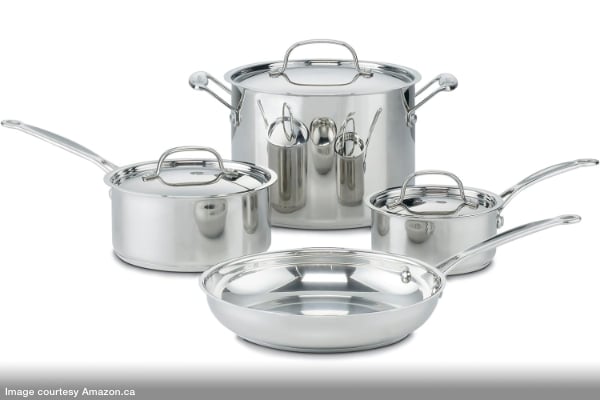
We live in a consumer culture. As a professional home organizer in Vancouver, I see first-hand how much people buy – especially the items on sale for a “good deal.” Unfortunately, many of these items break or wear out quickly. The result is a pile of broken, unusable clutter filling the home. Counter to the buy-use-breakdown approach to shopping is the “Buy It for Life” (BIFL) philosophy whereby people buy more expensive, higher quality goods. Could this be the answer to a clutter-free life?
In some respects, a BIFL mindset can lead to a more minimalist lifestyle. Because people focus on acquiring fewer, higher-quality possessions, they tend to have a more intentional approach to shopping and buying. However, consider these factors before becoming a BIFLer (biff-ler).
Environmental Impact
Many people adopt the Buy It For Life philosophy because of its impact on the environment. Typically, higher-quality goods reduce the environmental damage associated with constant manufacturing, transportation, and disposal of short-lived items. Longer-lasting products contribute to a decrease in overall resource consumption and waste generation.
However, this is not a licence to dump your current possessions and replace them with BIFL-quality items. That’s even worse for the environment. To become a good BIFLer, replace your items with the highest quality you can afford when the old ones wear out.
Quality vs Cost
BIFLers search out products of superior craftsmanship that endure the test of time but also exhibit a level of quality that is uncommon in a mass-production “dollar store” world. Buy It For Life items typically outlast their less expensive counterparts, resulting in fewer replacements and, ultimately, lower lifetime costs. For example, an OXO vegetable peeler is more costly than those from dollar stores. However, the OXO peelers are more durable and will last much longer. The upfront cost is high, but the cost over the duration of ownership (cost per year) is low.
Typically, BIFLers favour goods that they can easily maintain and repair such as clothing that can be tailored and footwear that can be re-soled. Additionally, they choose furniture they can reupholster or refinish and appliances they can get repaired.
Higher upfront costs are the primary disadvantage of the BIFL philosophy – especially for those with limited income. However, that does force people to be intentional about what they purchase, which may lead to less clutter in the home.
Distinctive Style and Changing Needs
Sometimes, BIFL products prioritize function over style, so if you have eclectic tastes in fashion or home décor, you might not find exactly what you are looking for. Another factor BIFLers encounter is their changing needs and lifestyle. For example, a young person might purchase a high-quality car when they get their first job. But that car might not be suitable for a growing family, and selling or trading the vehicle may not prove as lucrative as anticipated.
Risk of Loss, Damage, or Obsolescence
Despite their durability, BIFL items can get lost or damaged. Imagine purchasing expensive earbuds and losing them down a sewer grate! You’d be devastated! Please consider the risk of loss or damage before investing in a BIFL purchase. Also, investigate additional insurance coverage where appropriate.
Using the Buy It For Life philosophy may also not be practical for purchasing electronics and other tech devices. The rapid pace of innovation in these fields makes products obsolete relatively quickly. For example, Apple only actively supports iPhone devices manufactured in the past six years. That’s hardly a lifetime.
The Buy It for Life philosophy has several advantages – intentional purchasing, clutter-reduced lifestyle, and environmental sustainability. If you’re considering these options, also weigh factors such as upfront costs, repairs, potential obsolescence, and your lifestyle – now and in the future.
